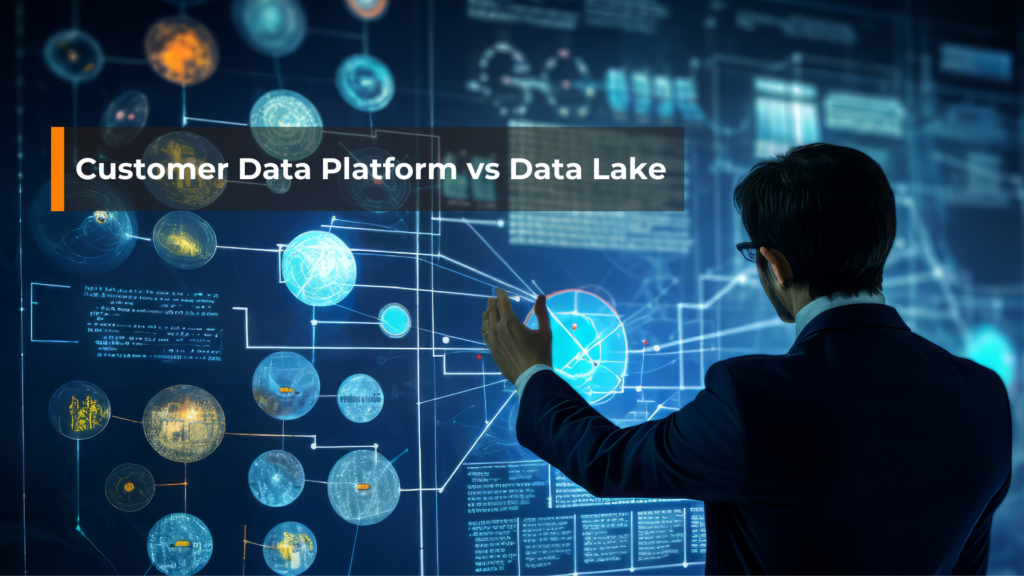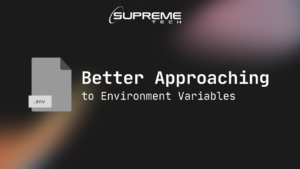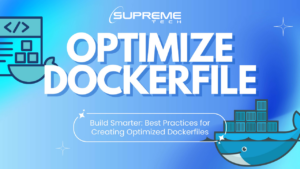Customer Data Platform vs Data Lake: Key Differences and Use Cases
01/11/2024
705
Table of Contents
Hi tech fellows, it’s been a while since my last article. It’s Linh again for the blog series of Customer Data Platform (CDP). Last time, I’ve shared the definition of customer data integration and why it’s important for online-merge-offline retail business. In the coming articles, let’s dive in some common data repositories, classify them and choose the best solution for your unique business. As you may know, two popular solutions for managing and utilizing data are the Customer Data Platform (CDP) and the Data Lake. While both serve critical functions, they differ in terms of structure, purpose, and usage. Understanding these differences is essential for companies aiming to leverage data effectively, especially in sectors like retail, finance, and technology.

What is a Customer Data Platform (CDP)?
A Customer Data Platform (CDP) is a centralized software solution designed specifically for collecting, unifying, and managing customer data from various sources. Unlike traditional databases, a CDP is built with customer-focused marketing and personalization in mind. It enables businesses to create unified customer profiles by consolidating data from interactions, behaviors, and transactions across multiple channels, such as websites, apps, CRM systems, and customer support interactions.
Key Features of a CDP:
- Unified Customer Profiles: CDPs integrate customer data from various sources to create a single view of each customer.
- Data Activation: CDPs enable real-time data activation, allowing businesses to use data for targeted marketing and personalized experiences.
- Integration Capabilities: They are often built to connect seamlessly with marketing and CRM platforms for streamlined data utilization.
- Data Compliance: CDPs often include built-in tools for managing consent and adhering to data privacy regulations, making it easier to comply with GDPR, CCPA, and other laws.
Primary Use Cases for CDPs:
- Personalized marketing and targeting
- Customer segmentation and engagement analysis
- Real-time data pipelines for dynamic campaigns
What is a Data Lake?
A Data Lake, in contrast, is a large repository that can store vast amounts of raw, unstructured data, often in its native format. It is highly flexible and can store all types of data, including structured, semi-structured, and unstructured data, such as images, video, and social media posts. Data Lakes are often used in data science and analytics-heavy organizations where data preparation, cleansing, and transformation occur before insights are derived.
Key Features of a Data Lake:
- Data Storage Flexibility: Data Lakes allow organizations to store raw data without enforcing a predefined schema.
- Cost Efficiency: Data Lakes often utilize low-cost storage options, which is beneficial for businesses handling large volumes of data.
- Scalability: Built for massive storage, Data Lakes can scale as businesses accumulate more data from various sources.
- Advanced Analytics Support: They serve as a foundation for machine learning and advanced analytics, where large datasets are processed to uncover patterns and insights.
Primary Use Cases for Data Lakes:
- Large-scale data storage and archival
- Machine learning and data science projects
- Analytics and reporting, especially on diverse data sources
Customer Data Platform vs Data Lake: A Comparative Analysis
| Feature | Customer Data Platform (CDP) | Data Lake |
|---|---|---|
| Primary Purpose | Customer data management and activation for marketing and personalization | Centralized data repository for diverse data storage, analytics, and machine learning |
| Data Type | Primarily structured, customer-related data | Structured, semi-structured, and unstructured data |
| Data Processing | Real-time, with a focus on customer experience | Batch processing and on-demand, often for data science |
| End-Users | Marketing teams, customer service, sales | Data scientists, analysts, IT departments |
| Compliance Management | Built-in tools for managing customer consent and privacy | Requires custom privacy management solutions |
| Integration | Integrates with CRM, marketing, and advertising platforms | Integrates with data processing tools like Hadoop, Spark, or cloud data warehouses |
Customer Data Platform vs Data Lake: Which one to choose?
While both platforms are valuable, the choice between a CDP and a Data Lake often depends on a business’s specific needs and data strategy.
- Choose a CDP if:
- Your goal is to improve customer experiences and drive personalized marketing.
- You need a single customer view across multiple touchpoints.
- Data activation and real-time capabilities are essential for your marketing and customer engagement strategies.
- Choose a Data Lake if:
- Your organization needs a flexible, scalable data repository for large volumes of diverse data.
- Advanced analytics, machine learning, or data science is a priority.
- You need a cost-effective storage solution for unstructured data and archival purposes.
Hybrid Approach: CDP and Data Lake Together
Some organizations may find value in using both a CDP and a Data Lake. For instance, data can first be ingested into a Data Lake, where raw data is stored and processed, then specific customer data can be moved into a CDP for real-time personalization and marketing purposes. This hybrid approach offers flexibility and maximizes the benefits of both systems, supporting both customer-focused initiatives and advanced analytics.
Conclusion
CDPs and Data Lakes both play critical roles in data-driven organizations but serve different functions. While CDPs focus on the customer experience by enabling real-time, actionable insights, Data Lakes offer scalable storage for all types of data, supporting data science and analytics. By understanding the unique capabilities of each, businesses can make informed decisions that align with their data management needs and organizational goals.
Seeking ways to utilize customer data for efficient decision making? Stay tuned for the next articles!
At SupremeTech, we’re supporting multi-million-customer business to build data pipelines that transform the way they serve customers. Let’s book a free consultation with us if you want a custom solution for your business as well.
Related Blog





















